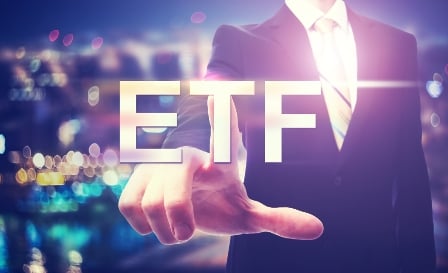There’s no doubt that ETFs’ popularity among investors will continue into 2017, but what else is on the horizon?

The ETF sector saw continued inflows throughout 2016, but also a price war and a record 127 closings of global ETFs. With that in mind, the Wall Street Journal predicts that the coming year will present both challenges and opportunities for the space. The newspaper identified five ETF trends advisors should keep an eye out for in 2017.
1. Lower expenses will continue to be a factor, but fees will start to play a role. Plain index-fund ETFs typically have expense ratios lower than 0.05%, which accounts for their general outperformance. However, the growing market for smart-beta ETFs will expose more investors to additional costs. “Investors continue to learn more about the different facets that go into ETF prices and why they cost what they do,” Tim Coyne, head of global capital markets for State Street’s SPDR ETFs team, told the paper.
2. The Department of Labor’s fiduciary rule will drive assets away from funds with sales loads or trailer fees. Although there’s some speculation that the rule, which requires investment advisors to act in their clients’ best interests, could be scrapped by the Trump administration, Canada is already in the midst of a similar shift as new reporting rules imposed under CRM2 take effect. Even as funds announce changes in fee structures for the benefit of clients, ETFs and other lower-cost index funds may retain their competitive advantage for some time.
3. Smart beta should get more of a push as non-passive products expand into fixed-income, value and dividend investing. Smart-beta products are getting some attention from cautiously optimistic institutional investors. In 2016, US-listed smart-beta ETFs drew more than US$41 billion in new assets as of November 30 to end the period with an asset total of US$540 billion. Should these ETFs withstand the test of time, higher-cost quantitative strategies and struggling hedge funds could be in trouble.
4. The expanding adoption of automated advice will benefit ETFs. No longer the exclusive tool of robo-advisors, automated rebalancing via ETFs is now being married with a human touch, leading to hybrid products from established brands. Now that Vanguard and Charles Schwab have joined the fray with such offerings, ETFs will likely play a bigger role in retail investors’ portfolios.
5. The active approach will gain ground. The past year’s events have highlighted the benefits of overweighting or underweighting ETFs with specific investment mandates, allowing investors to capture gains or minimize losses. However, since such direction requires keen awareness and analysis of both domestic and international policy and international rhetoric, buy-and-hold investors will likely still be better off relying on low-cost broad-market funds.
1. Lower expenses will continue to be a factor, but fees will start to play a role. Plain index-fund ETFs typically have expense ratios lower than 0.05%, which accounts for their general outperformance. However, the growing market for smart-beta ETFs will expose more investors to additional costs. “Investors continue to learn more about the different facets that go into ETF prices and why they cost what they do,” Tim Coyne, head of global capital markets for State Street’s SPDR ETFs team, told the paper.
2. The Department of Labor’s fiduciary rule will drive assets away from funds with sales loads or trailer fees. Although there’s some speculation that the rule, which requires investment advisors to act in their clients’ best interests, could be scrapped by the Trump administration, Canada is already in the midst of a similar shift as new reporting rules imposed under CRM2 take effect. Even as funds announce changes in fee structures for the benefit of clients, ETFs and other lower-cost index funds may retain their competitive advantage for some time.
3. Smart beta should get more of a push as non-passive products expand into fixed-income, value and dividend investing. Smart-beta products are getting some attention from cautiously optimistic institutional investors. In 2016, US-listed smart-beta ETFs drew more than US$41 billion in new assets as of November 30 to end the period with an asset total of US$540 billion. Should these ETFs withstand the test of time, higher-cost quantitative strategies and struggling hedge funds could be in trouble.
4. The expanding adoption of automated advice will benefit ETFs. No longer the exclusive tool of robo-advisors, automated rebalancing via ETFs is now being married with a human touch, leading to hybrid products from established brands. Now that Vanguard and Charles Schwab have joined the fray with such offerings, ETFs will likely play a bigger role in retail investors’ portfolios.
5. The active approach will gain ground. The past year’s events have highlighted the benefits of overweighting or underweighting ETFs with specific investment mandates, allowing investors to capture gains or minimize losses. However, since such direction requires keen awareness and analysis of both domestic and international policy and international rhetoric, buy-and-hold investors will likely still be better off relying on low-cost broad-market funds.



